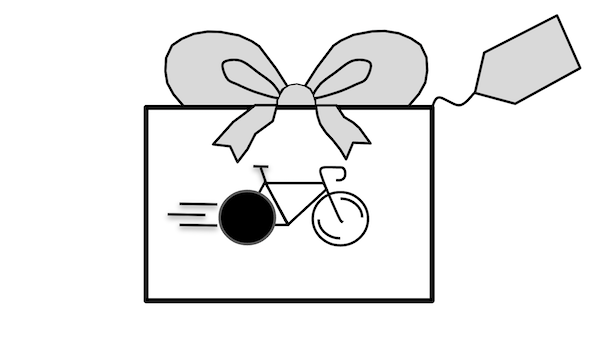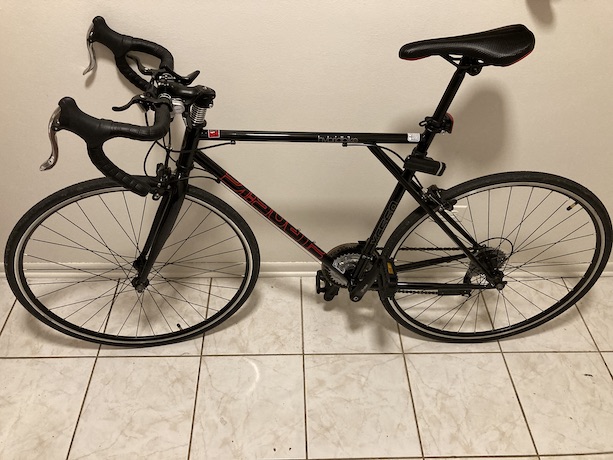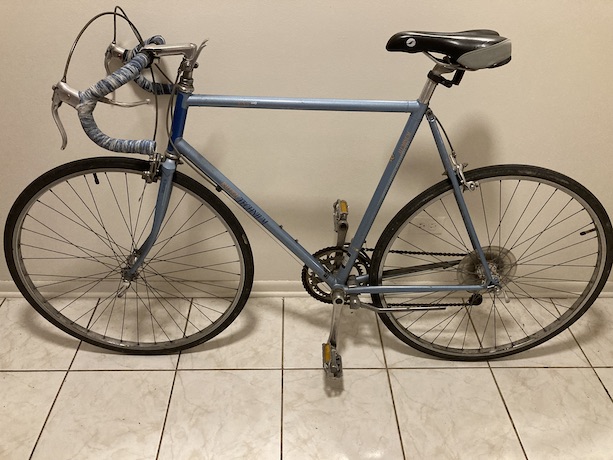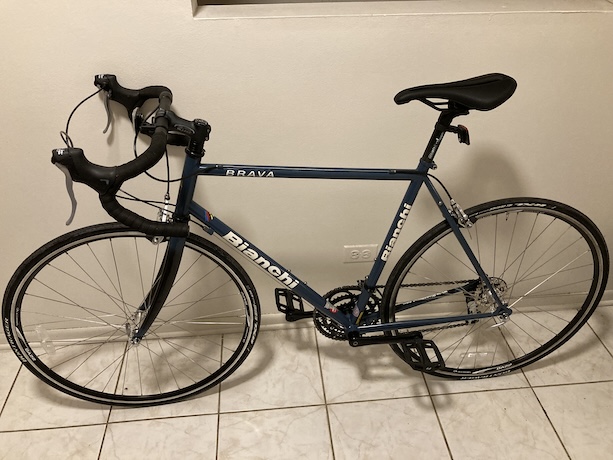
Chicago Bike Routes
What Kind of Road Bike Should I Buy? A 4 Bike Case Study
Posted: 9/16/2023 Updated: 9/7/2024

When I bought my first road bike in 2019, I didn't have much experience or knowledge related to road bikes. I decided that I wanted to know what a brand new bike from an established company was capable of, so I purchased what I considered to be an entry level but fairly expensive road bike - a Bianchi Via Nirone Sora.
It's been more than 5 years since I bought the Bianchi, and I now have a total of 4 road bikes that I consider to be from different parts of the bike market. I have a better formed opinion about what kind of road bike I should have bought from the start for my particular lifestyle (someone who wants to use one bike for everything: year-round work commutes, street riding, trail riding). My current opinion is that a used road bike can be a great option if the goal is to bike in a variety of routes and weather conditions while maximizing value (durability, speed, comfort) and minimizing costs.
What Bikes Do I Have?
1. Bianchi Via Nirone Sora (2019 purchase - $910): From 2019 to 2021, I did everything with this bike that I bought from a Chicago bike shop. I took it on long trail rides on paved and flat dirt paths, I rode around on Chicago city streets and work commutes, and I rode it in all kinds of weather (a few winter days, several rainy days). I wasn't gentle with this bike, but it held up well. I don't use this bike for commuting or winter riding anymore, but I still sometimes ride it on fair weather days. Bianchi is an established bike manufacturer with a lot of history and experience, and it showed in the quality of the bike that I bought from them.

2. Tianjin Eurobike XC560 (2021 purchase - $296): I was looking for a relatviely inexpensive road bike that I would use for riding in bad weather and wouldn't mind leaving locked for hours when visiting places around Chicago. I wanted a low cost bike so that it would not be a huge deal if it was damaged or stolen. I searched online (I had never bought a bike online before) and found this road bike in my size. Like with the first road bike that I obtained, I was not gentle with this bike and rode it on daily work commutes during the winter months. I was able to make use of the XC560, but it didn't prove to be as durable as I hoped. The handlebars became difficult to turn as headset components rusted and failed. After a year of using this bike, I was ready for an upgrade. This bike also had limited speed in flat Chicago compared to the other bikes in this article due to its gearing - it seemed to be built to have mostly low gearing useful for prolonged climbs. The hardest gear still felt relatively easy on flat terrain.

3. Raleigh Technium 440 (2022 purchase - $258): The Technium series of bikes by Raleigh, which appears to be a model from the 80s and 90s, was my second attempt at purchasing a durable yet low cost road bike. I was introduced to this bike by staff at one of my local bike shops, and it was the first used bike that I purchased. I used it for daily commutes in all weather conditions and for several long distance leisure rides (80+ miles). Having never bought a used bike, I was suspicious of this bike at first, but it proved to be a reliable work horse with few problems until a catastrophic failure occurred. After 1.5 years of near daily use (including 2 winters), the aluminum frame broke near one of the rear wheel fork ends. I decided to search for another used bike.

4. 2006 Bianchi Brava (2024 purchase - $500): I enjoyed the performance of the Raleigh mentioned above, which served as my everyday commuting bike, but I needed to replace it after I wore it out. I aimed for a replacement that was still a used road bike but with hopefully some more durability. I purchased a used Womens Bianchi Brava as the replacement. This bike has served as my daily commuter bike and I've ridden all over Chicagoland with it. I'm very satisfied so far. Its steel frame is noticeably less bumpy/shaky during rides than my aluminum frame bikes (Raleigh and Via Nirone Bianchi mentioned above), and the only major downside noticed so far is that the forks only seem to allow for thin 23 mm wide tires, but this has not stopped me yet on Chicago's steets.

Why Do I Prefer Used Bikes?
If I had to go back and buy only one road bike to fit my needs, I know what kind I would choose. Since I value an inexpensive yet durable bike, I would choose to buy a used road bike from a bike shop, like I did with my Raleigh bike and Bianchi Brava.
Below are my main reasons for preferring my used bikes over my other bikes, if I was limited to only buying one of them.
1. Less worried about theft or damage: I often hesitate to ride my Via Nirone Bianchi when I know I will have to lock it up on the street for a long time - I feel like it would be a let-down to have a bike that I consider expensive to be stolen or damaged. There is much less anxiety with my lower priced, used road bikes and this is a big plus.
2. Speed & comfort is good enough: My used bikes (Raleigh Technium and Bianchi Brava) appear heavier than my higher end Via Nirone Bianchi and lighter than my Tianjin bike, but it makes little difference to me during most of my riding. Although I consider the Via Nirone bike as having a "feel" that makes it fun to try to push myself when trying to go fast on paved, traffic-free bike path sections, the used bikes are fun to ride as well, and I still get where I want to go in a reasonable time with reasonable effort.
As far as bike components go (I don't know much about bike components at this time), one of the distinguishing features of my Raleigh bike (and many vintage bikes) is that it has friction (non-indexed) gear shifters instead of indexed gear shifters. All of the bikes that I have ever had use indexed shifters where you push a lever to change gears, but the mechanism only allows you to push the lever to certain predetermined positions. Therefore, using friction shifters where there are no predetermined lever positions and you decide where to position the lever to accomplish a gear change took a little time. Because of where the friction shifter levers are located on my bike, I occasionally bumped them with my knees when coming out of the saddle (to sprint), which was tolerable but not ideal. When I bought my used Bianchi Brava, I was happy to see that it had indexed shifters. The used Brava also has simlar components (shifters, derailleurs, crankset) as my more expensive Via Nirone (components are mostly entry level Shimano Sora components), and I have not noticed a significant performance difference.
My road bikes have had different tire widths, but I have not noticed a major difference in my daily riding due to this. The used Raleigh has 32 mm tires, the used Brava has 23 mm tires, and the Via Nirone has 25 mm tires.
One thing that has made a difference to me regarding comfort has been frame material. My used Bianchi Brava steel frame appears to reduce shakiness going over bumps compared to my Via Nirone and Raleigh (aluminum frames).
3. Good durability for the price: My Via Nirone Bianchi bike is still going strong after more than 5 years and thousands of miles of use. For the most part, it has only required replacement of consumable components as they have worn out. At various times I have replaced the chain, tires, brake pads, brake and shifter cables, plastic pedals, and one brake caliper. It is not advisable to take a road bike on rugged terrain (such as mountain bike trails), since these bikes are typically not designed for such purposes and there is a heightened safety risk, but I found myself on rugged paths with this bike on a few occasions, and although I do not recommend it and needed to navigate slowly, the bike did not appear to suffer significant damage (I eventually broke one wheel spoke). The Via Nirone is definitely a durable bike, but the durability comes at a fairly high price ($910 in 2019).
The new Tianjin bike that I bought online was inexpensive ($296) and fullfilled its bike commuting duties for a about a year until it experienced a major failure. The headset components, which connect the handlebars to the frame of the bike, wore out to the point that the metal components were rusting on the inside and falling apart. I eventually couldn't turn the handlebars without significant effort because the bearings inside of the headset rusted to bits. Although I mostly rode on flat routes with this bike, I did make the mistake of riding it on rugged terrain a few times, which it was not built to do, and I appeared to have damaged the wheels (spokes were broken or damaged and wheels were no longer true). I had this bike repaired, but I was ready for an upgrade that was more durable but still fairly low priced, so I turned to used, higher quality bikes.
My used Raleigh bike proved inexpensive ($258) and served me well during 1.5 years of near daily use. The only maintenance that I had to perform on this bike was replacing the tires when they wore out after about 8 months of nearly daily riding and tightening a few screws that eventually became loose on the friction gear shifters and brake levers. I think that my used vintage Raleigh showed itself to be fairly durable given its age and price, but I did eventually break the frame.
I'm anticipating that my used Bianchi Brava will fullfill my vision for a durable yet lower cost road bike that I can use for everything. I see it as a potential step up in durability compared to my Raleigh. So far it has delivered on performance, but we'll see if it delivers on longterm durability.
Although I still consider my knowledge of bikes to be limited, hopefully my experience with my first 4 road bikes can be useful to others who may be considering their first bike.